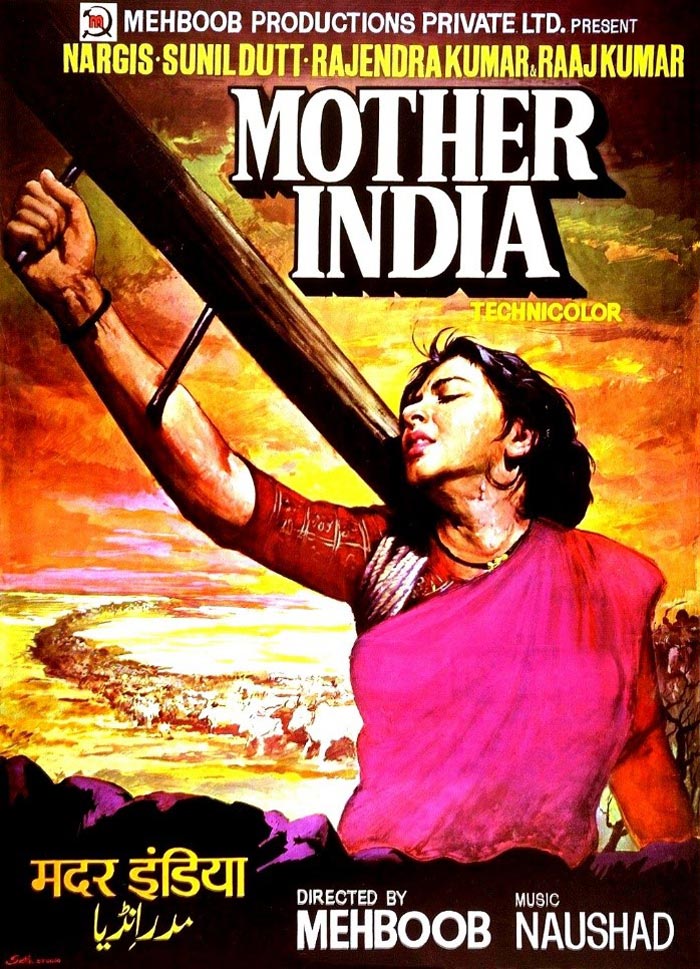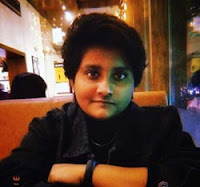Cinema, otherwise known as Motion Picture or film, brings joy and amusement to a lot of Indians. Indians have made Cinema an integral part of their lives. Every generation, from kids to adults, finds it fascinating. Films in itself have encountered Evolution. From no colors to full of colors, from multiple reels to a single showreel, from zero graphics to VFX, so many things have changed through time.
India witnessed it’s first motion picture ‘Raja Harishchandra’ which was introduced by Late Dhundiraj Govind Phalke, also known as Dadasaheb Phalke, in 1913. It was a first full-length Bollywood silent movie. He oversaw the production of 23 films between 1913 to 1918. Dadasaheb Phalke is considered ‘The Father of Indian cinema’. Two years later, on 1931, India witnessed its first Motion picture with sound ‘Alam Ara’ which was directed by Ardeshir Irani. And the seed of color Cinema was sowed through ‘Kisan Kanya’ directed by Moti B. Gidwani in 1937.
Gaining independence from the British Raj was tough and spanned from 1857 to 1947 - lasting for 900 years. However, the struggle in gaining India’s independence enthused the film industry. Some of the most critically acclaimed movies were made during this time and explored the difficult working-class life in India and reality of Urban life. From 1940s to 1960s is considered as ‘The Golden Era’ of Indian cinema. This was the time when the magnificent Bengali filmmakers like Satyajit Ray, Mrinal Sen, Ritwik Ghatak and many more brought parallel cinema into existence. The impact of Indian Theatre and bengali literature gave its rise to the parallel cinema. During this time countless influential Bollywood movies were made exploring new storytelling techniques and social themes.
After this came films which had songs, dance, fight and so called ‘Heroism’, that dominated the Indian film industry. At this time Bombay film industry, famously known as Bollywood, has become one of the biggest film industries in the world. They have always been prolific in imbibing the audience with its intriguing content, be it a typical family drama or a stereotypical love story. But a lot has transformed over the years and Bollywood filmmakers are trying to change the face of the industry by making realistic films.
For Bollywood, the road to an authentic Portrayal of Women has been Bumpy. In India’s Hindu film realm, onscreen female characters have long been depicted as passive housewives who bow to the patriarchal pressures. But this Portrayal is being challenged. A number of movies in recent years have shown women as full and complex human beings - not melodramatic side characters, but outspoken, independent leads who are in charge of their own fates.
74 years since independence, Bollywood has gone through a lot of modifications considering a shift from classic Mythological blockbusters to Making remakes of Hollywood's and Tollywood’s successful films. Women in Bollywood movies have played an imperative character in the accomplishment of individual movies. Their character on the other hand has transformed eventually. From being reliant on the Hero to very autonomously taking the storyline to the fore.
In the early period, Indian movies were generally focused on Mythological stories and utter classics such as India’s first feature film ‘Raja Harishchandra’. During the Independence movement, movies were used as a medium to voice the belief of nationalist leaders and parties claiming freedom from British rule. After the freedom, movies became a means of expression for addressing social issues.
The Golden Era:
The Golden era was the time when Bollywood showcased the standards and morals of Indian Culture. The problem of poverty was discussed during this time. The audience could relate to the characters shown in the movies. Some movies from the Golden era like ‘Mother India’, ‘Pakeezah’, ‘Mughal-E-Azam’, ‘Do Bigha zameen’ etcetera was so famous that later generations remember them even now. This was also the time when women were playing exceptionally significant roles in Hindi movies. Women were offered equally leading roles alongside male actors. One very successful movie from this era was ‘Mother India’ (1957), it captures the essence of the identity of female characters of this period. Women were being celebrated as the nation's pillar of strength, and this thought perfectly represented in the iconic movie poster that shows Nargis lugging a heavy wooden plough in ‘Mother India’.
While female characters were an important part of the portrayal, they often portrayed through a patriarchal point of view. This made Waheeda Rahman's character in the 1965 classic ‘Guide’ an exception. Her character’s name in the movie was Rosie, who left her cheating and unsupportive husband to follow her passion and chose to be with a man she loves. When he didn't turn out to be what she thought of him, she left him too. Such things were not something female characters of that era enjoyed.
Movies of this era also depict a lot about the way body image was perceived through big screen. While it goes without saying that abs and toned muscles were non-existent, the depiction of the female form was purely for the narrative, and never unjustified. For instance, in the movie ‘Sangam’ (1964), Vyjayanthimala Bali appears in front of the camera wearing a bathing suit, while Raj Kapoor stands amongst the trees singing to her. The camera switches between the both of them, but chooses to remain on the focus of the scene. There is no slow-motion panning of the actress' semi-clothed body or lingering shots of her waist—shots that have become a staple of every modern-day song.
1970s - 1980s
During the 1980s, the starting of Action era caused a lot of modifications. Bollywood heroines lost their might and space to actors and they were devalued to being a sensational factor of the movie dancing around trees and snow-covered hills, getting Kidnapped or raped or killed. This is the period when women in Bollywood were largely downgraded to the role of a mother or a faithful and a dutiful wife. This mother figure was often shown tolerating taunts and oppression in silence, and getting her redemption in the end via paranormal or a male intervention. ‘Jai Santoshi Maa’ (1975), ‘Seeta Aur Geeta’ (1972) are the perfect examples of this theory. In both the movies, the ‘good' female character was shown as a fearful and oppressed woman who suffered the mental and physical, torture from her family members without a single word. Their silence in the face of that much pain indicates the virtue that all women must have. They eventually get to be happy in the end, but remain as acquiescent as they were before, with a happy ending for the audience that comprised largely of men.
The action era
Afterwards came the 1990s, the action era. In this era Bollywood used the most problematic theme of all time and that is using Rape as a plot device. The strong and macho hero needed a reason to deliver crowd-pleasing dialogue and beat up the bad guys in a choreographed fight sequence, and the reason was, the rape of his sister, his mother, girlfriend or any other woman in his life. The female lead became a one-dimensional character whose whole existence in the movie was to be at the mercy of the bad guy first, and then her brother/boyfriend/husband, who will come and save her. In this era, the second wave of feminism was shaking the western world, and made its presence felt back home as well. Women began to explore the idea of leaving their houses to follow their dreams and ambition. The power dynamic began to shift in society, especially in the middle class. The female lead of this era was liberated and she had a job that paid her well, but she had to rely on the support of men to get what she wanted. In the year 1994, the blockbuster film ‘Mohra’, starring Suniel Shetty, Raveena Tandon, and Akshay Kumar. Raveena Tandon, one of the three female characters who had lines, played the role of Roma, a newspaper journalist. While at the beginning she's shown as a career-oriented woman investigating murder convict Vishal Agnihotri's (Suniel Shetty) tragic story, through the movie, which involves several twists and fight sequence, Roma is relegated to the role of damsel in distress, regardless of being an educated and accomplished woman. Roma's ability to handle situations is not signified at any point in the plot, making her ‘liberation' a contrivance. Ironically, what her character is most remembered for today is a dance number, where she dances in the rain in a wet yellow saree.
The new era
The early 2000s marked transition of Bollywood from where it was to its current form. The new generation started to slowly reject the ideas previously held close by the society. The process was very slow, but the results are evident. For example, in ‘Aitraaz’ (2004), starring Akshay Kumar and Kareena Kapoor khan, Priyanka Chopra played a role. Her character, Sonia, is portrayed as a driven model who terminates a pregnancy because of her ambitions, and later schemes to get her ex (Akshay, who leaves her because of abortion) accused for rape for dumping her. Sonia's hunger to get ahead, by playing a dirty game, were enough to cast her as a villain of the story. There's no denying that she was the negative character in the story, who was trying to get back at an ex by accusing him of rape, but apart from that, the factors that attributed to her being cast as the ‘bad guy' was driven, career-focussed, sexually liberated, with bodily agency - would hold no ground in today’s world. This is majorly due to the shift in audience's perception of the lack of equality in the storytelling of these movies. With more women involved in the writing process of the films, female opinions and perspectives finally began to be explored. Through the exposure of internet and the increasing literacy amongst people, the audience grew with more examples of progressive cinema from around the world and began rejecting the idea of a one-dimensional female character, looked at through the lens of patriarchal point of view. There's an addition of subjects that previously have been unexplored by mainstream Bollywood cinema, like female sexuality in ‘Margarita, With A Straw’ and ‘Lipstick Under My Burkha’, for instance.
All this is not to say that this generation is the Golden Era for women in cinema. This decade has seen the transmission of an unrealistic body standard, especially for women. It was no longer acceptable to just be a woman existing in the movies to fulfil the needs of a man. The character should have a body that would look good in a bikini, no matter her profession. One look at the action blockbusters from recent years will male you understand that we still haven’t eliminated the gender inequality issue in Bollywood. Interchangeable female leads in insignificant roles seem to be a theme in a majority of hit movies. But there's also the upside of this. Audiences are now more responsive to female-led movies, like Piku (2015), Neerja (2016), Queen (2014) or Kahaani (2012). More diversity in writing has also led to female audiences responding to seeing a version of themselves onscreen that they haven't before.
By-
Aritri Ghosh
Amity University, Kolkata



Nicely written
ReplyDelete